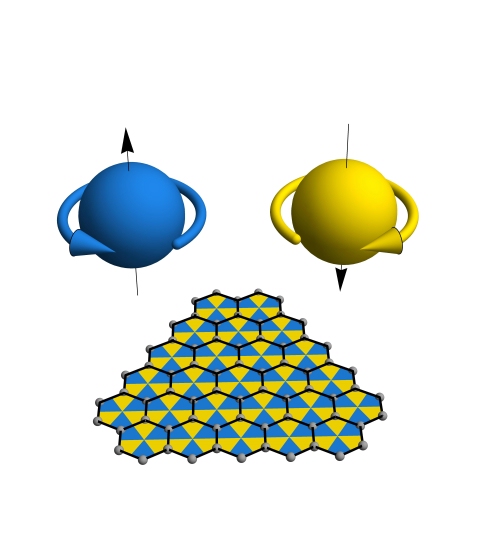Space and time form a boundless continuum, which is curved by massive objects. But what does the fabric of spacetime look like? In general relativity, it is smooth and continuous. Two researchers now claim that space could be divided into discrete locations, and thereby explain the peculiar intrinsic angular momentum of the electron, or spin.
Professor Chris Regan and graduate student Matthew Mecklenburg, when studying the electronic properties of graphene, found that an electron can acquire two different quantum states depending on its position on a layer of graphene.
Graphene is a specific kind of carbon, or allotrope, structured in one-atom-thick planar sheets in a hexagonal formation. In their model, the researchers showed that graphene’s pseudospin – a spin equivalent – is also a real angular momentum. They considered a space with two different positions, like tiles on a chessboard; the electron can acquire spin if the tiles are so close together that their separation cannot be detected.
“An electron’s spin might arise because space at very small distances is not smooth, but rather segmented, like a chessboard,” Regan said.

The physicists’ findings are published in the March 18 edition of the journal Physical review Letters.
The spin of an electron is peculiar for two reasons. First, it cannot be a rotational property: if electrons had a radius, they would have to spin faster than the speed of light, violating Einstein’s relativity. Second, experiments showed that the electron is a pure point particle without any radius, so there is really nothing that could possibly spin.
However, pushing their idea further, the scientists suggest that like pseudospin, the electron’s intrinsic spin could arise from a hidden substructure in spacetime itself. To put it differently, spacetime would be quantized. Of course, moving from the two-dimensional space of a graphene layer to our four-dimensional spacetime is far from being easy, but it will be interesting to see if there are other lattices capable of generating spin. Is there a hidden structure underlying reality? Who knows…
Reference
Matthew Mecklenburg, B. Regan. Spin and the Honeycomb Lattice: Lessons from Graphene. Physical Review Letters, 2011; 106 (11) DOI:10.1103/PhysRevLett.106.116803



